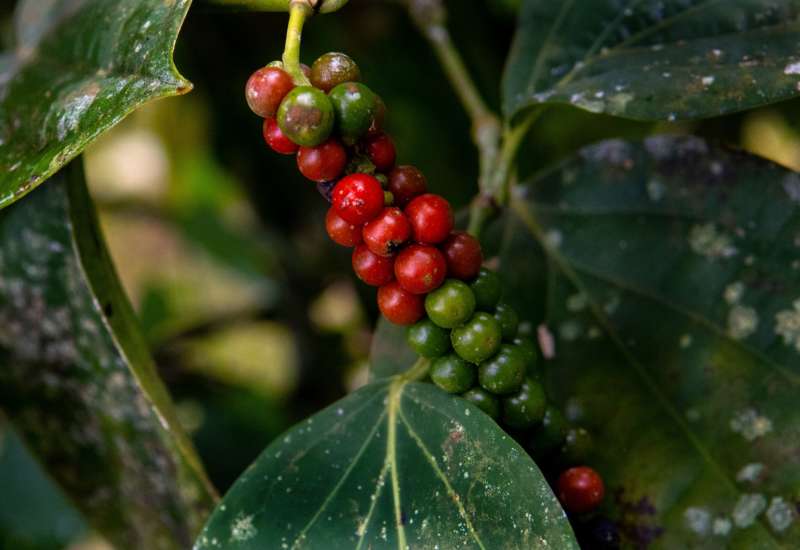Growing up in North Texas, farming to me meant fields of single crops stretching as far as the eye could see. Like many Americans, I’d come to assume that trees had no place in that vista. In fact, most of us probably assume a trade-off between forests and food.
Now that the climate crisis calls for vastly more trees, it’s time to take in the good news that trees and crops can do well together.
In fact, from Burma, to India, to the Philippines and countless other places, this is not news at all. Farmers have long known that crops and trees don’t compete — they complement each other. South and Southeast Asia have been credited as the “cradle” of agroforestry.
In this practice, Africa offers inspiring lessons today.
The African Sahel, a strip of 10 countries south of the Sahara, was for decades linked in my heart to great suffering due to its recurring famine. From the late 1960s to the early 1980s, drought combined with the legacy of colonialism caused many to die of starvation. Niger — one of the world’s poorest countries — was hit particularly hard.
However, once crops were able to grow again in the mid-1990s due to improved rainfall, farmers began reviving their traditional, pre-colonial practice of growing trees and crops in the same fields, also called agroforestry.
You see, with the right mix, trees and crops help each other thrive.
In Niger, through farmer-to-farmer learning, more and more families came to see that tree stumps — along with tree roots and seeds in the soil — could all be nurtured, sprout and become trees. Farmers also embraced the traditional practice of growing legumes like cowpeas and peanuts that fix nitrogen — so they need not turn to chemical fertilizer, which can be costly and environmentally damaging.
Ultimately, their work protected and regenerated perhaps as many as 200 million trees, all of which sequester carbon, improve soil fertility and significantly increase crop yields, experts on the ground have explained to me. They also offer fruit, fodder and firewood, and their foliage reduces soil temperature, helping retain soil moisture.
To underscore farmers’ role as the leaders in this process, these practices are called “farmer-managed natural regeneration.”
So effective were these practices that by 2009, Niger generated food security for 2.5 million people — then about 17 percent of the population. No one knows for sure how widespread these practices are in sub-Saharan Africa today, but Gray Tappan of the U.S. Geological Survey offered me an extrapolation from what is known: On-farm trees may have spread to more than half-a-million square miles in the region.
That’s more twice the size of Texas! Amazing.
And what does this big shift to agroforestry feel like? To help me understand, agronomist Tony Rinaudo shared a comment from a child in Ghana: “We eat fruits any time we want to, and if our parents have not prepared food, we can just go to the bush.”
West Africa’s revitalization of integrating crops and trees has echoes here in the U.S.
One is in the spread of alley cropping — a twist on agroforestry. Since 2013, the Savanna Institute in Wisconsin — inspired by native ecosystems — has been working with farmers to spread this practice to Illinois, Iowa, Minnesota and Wisconsin. In alley cropping, widely spaced “alleys” of trees thrive among companion crops that also help store carbon. The practice increases each acre’s total yield by at least 40 percent.
Plus, alley cropping helps farmers by sequestering carbon, diversifying their income sources, preventing soil erosion and providing wildlife habitat, Jacob Grace of the Savanna Institute explains.
Almost a quarter of “all Midwestern farmland would be more profitable with rows of trees in it, compared to corn and soybean monocultures,” Grace writes.
Beyond the Midwest, another contributor to agroforestry’s reach is Soul Fire Farm in upstate New York. It offers immersion learning for those of Black, Indigenous and Latinx heritage in regenerative farming — including Afro-Indigenous agroforestry.
Agroforestry — from Africa to our Midwest and beyond — holds the technical potential to sequester a significant percentage of total global emissions.
These leaders, and so many more, build on millennia of experience integrating trees and crops. So, let’s spread the word that trees and crops are natural allies whose relationship we can nurture for the benefit of all.
Note: This article features topics discussed in the 50th anniversary edition of the author’s book, Diet for a Small Planet, released September 2021. This version features a brand-new opening chapter, simple rules for a healthy diet, and updated recipes by some of the country’s leading plant- and planet-centered chefs. You can join in the Democracy Movement at www.democracymovement.us.


